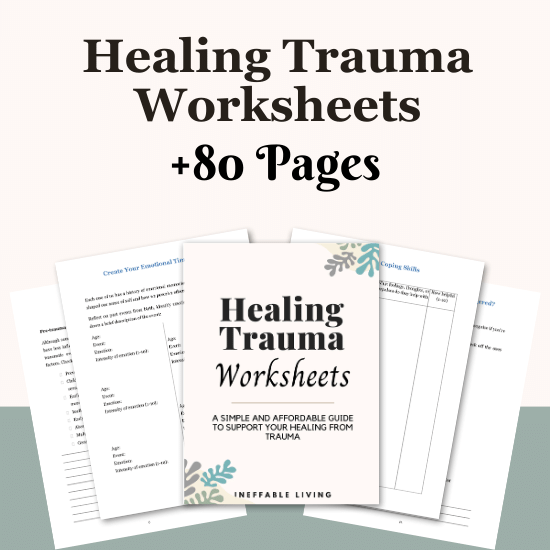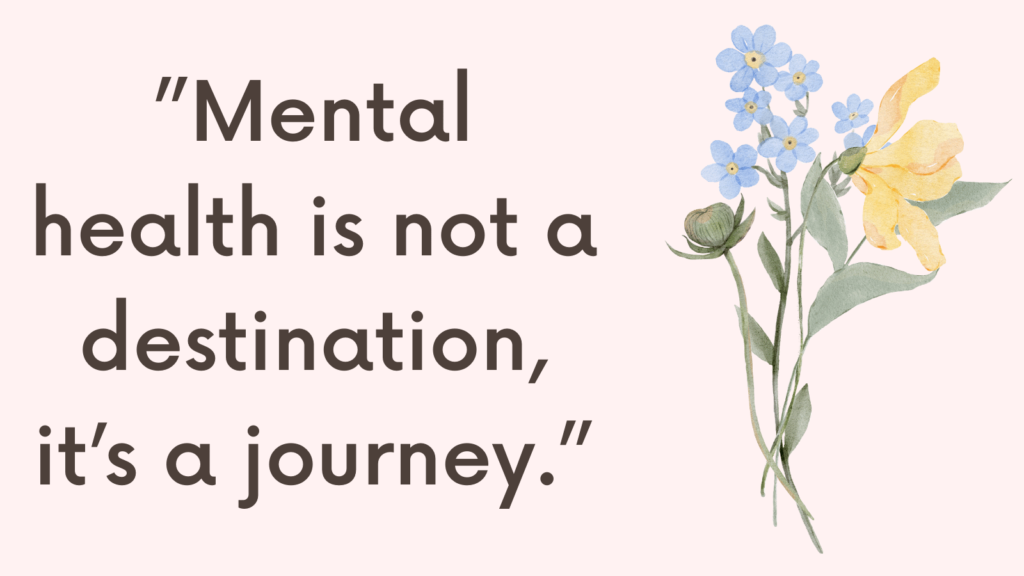In this post, you’re going to learn how to rebuild your life after trauma.
How to Rebuild Your Life After Trauma?
Rebuilding your life after trauma is a challenging and individualized process. Here are some strategies to help you navigate this journey:
#1. Establish safety and stability
Start by creating a safe and stable environment for yourself.
1. Physical safety: Ensure that you are in a safe environment where the risk of harm or re-traumatization is minimal. If necessary, consider making changes to your living situation, such as moving to a new location or implementing security measures.
2. Emotional safety: Create a supportive and nurturing space for your emotional well-being. Surround yourself with people who provide understanding and empathy. Cultivate healthy boundaries and communicate your needs effectively to those around you.
3. Establish a routine: Structure and predictability are essential for establishing stability. Develop a daily routine that includes activities such as adequate sleep, regular meals, exercise, and self-care. Having a structured routine can offer a sense of stability and control over your daily life.
4. Focus on basic needs: Ensure that your basic needs are met, including food, shelter, clothing, and healthcare. Pay attention to your physical well-being by maintaining a balanced diet, exercising regularly, and attending to any medical concerns.
#2. Seek professional help
Trauma can have a profound impact on mental health.
Consider working with a qualified mental health professional, such as a psychologist or therapist, who specializes in trauma.
They can provide evidence-based therapies like Cognitive Behavioral Therapy (CBT) or Eye Movement Desensitization and Reprocessing (EMDR) that can help you process and heal from the trauma.
Related: What Is Hyper Independence Trauma?(+4 Steps To Healing)
#3. Practice self-care
Engage in activities that prioritize your well-being and promote self-care.
1. Prioritize physical well-being: Engage in regular exercise, eat nutritious meals, and get enough sleep. Physical activity can help regulate emotions, reduce anxiety, and improve overall well-being.
2. Establish a self-care routine: Create a daily or weekly routine that includes activities you find enjoyable and relaxing. This might involve engaging in hobbies, spending time in nature, practicing mindfulness or meditation, or simply setting aside time for quiet reflection.
#4. Connect with others
Social support is crucial in the healing process.
1. Seek support groups or therapy: Consider joining support groups or attending therapy sessions specifically designed for individuals who have experienced trauma. These platforms provide a safe space to share experiences, gain insights, learn coping strategies, and connect with others who can empathize with your journey.
2. Strengthen existing relationships: Reach out to family members, friends, or loved ones who have been supportive in the past. Nurture these relationships by spending quality time together, engaging in open conversations, and seeking their understanding and assistance when needed.
3. Join community activities: Engage in activities within your community that align with your interests or passions. This might involve volunteering, joining clubs, participating in group classes or workshops, or attending local events. By connecting with individuals who share common interests, you can develop new friendships and expand your support network.
4. Online support communities: In addition to in-person connections, there are numerous online support communities and forums where you can connect with others who have similar experiences. Ensure that these online communities are reputable and moderated to maintain a safe and supportive environment.
Related: 7 Trauma Release Exercises To Support Your Recovery After Trauma
#5. Challenge negative beliefs
Traumatic experiences can lead to negative beliefs about oneself and the world.
1. Recognize negative thoughts: Start by becoming aware of the negative thoughts and beliefs that arise in your mind. Pay attention to the language you use when describing yourself or your abilities. Identifying these negative thoughts is the first step towards challenging and reframing them.
2. Gather evidence: Once you have recognized a negative belief, gather evidence that challenges it. Look for examples from your own life where the belief has been proven wrong or situations that contradict it. This exercise helps to create a more balanced perspective.
3. Thought records: Keep a thought journal or use cognitive behavioral therapy techniques such as thought records. Write down the negative belief, the situation or trigger that led to the belief, the evidence supporting the belief, and alternative perspectives or counter-evidence that challenge it. This process of examining your thoughts and evidence objectively can help weaken the grip of negative beliefs.
4. Cognitive restructuring: Practice cognitive restructuring techniques to challenge and reframe negative beliefs. Replace negative self-talk with more realistic and positive affirmations. For example, if you believe “I am worthless,” challenge this belief by replacing it with “I have inherent worth and value as a person.”
Related: Negative Core Beliefs List (& 8 Tips On How To Challenge Them)
#6. Practice Relaxation Techniques
Practicing relaxation techniques can be a valuable tool in rebuilding your life after trauma. These techniques can help reduce stress, anxiety, and promote overall well-being.
1. Deep breathing: Engage in deep, diaphragmatic breathing by inhaling deeply through your nose, allowing your abdomen to expand, and exhaling slowly through your mouth. This type of breathing activates the body’s relaxation response and can help calm your nervous system.
2. Progressive muscle relaxation: This technique involves systematically tensing and relaxing different muscle groups in your body. Start by tensing and then releasing each muscle group, moving from your toes all the way up to your head. This exercise can help release muscle tension and promote a sense of relaxation.
3. Mindfulness meditation: Dedicate some time each day to practice mindfulness meditation. Sit comfortably, focus on your breath, and bring your attention to the present moment without judgment. This practice can help calm your mind, increase self-awareness, and enhance relaxation.
4. Guided imagery: Use your imagination to visualize peaceful and calming scenes, such as a serene beach or a lush forest. Close your eyes, engage your senses, and immerse yourself in the details of your visualization. This technique can help create a sense of relaxation and mental escape.
Related: Best 11 Grounding Techniques For Dissociation
#7. Practice self-compassion
Practicing self-compassion is a crucial component of rebuilding your life after trauma. It involves treating yourself with kindness, understanding, and acceptance.
1. Be kind to yourself: Treat yourself with the same kindness and understanding you would offer to a friend who is going through a difficult time. Remind yourself that it’s okay to struggle and that you deserve compassion.
2. Cultivate mindfulness: Practice non-judgmental awareness of your thoughts, emotions, and bodily sensations. Allow yourself to observe these experiences without judgment or attachment, offering yourself understanding and compassion instead.
3. Accept your emotions: Allow yourself to feel the full range of emotions that come with trauma. Rather than suppressing or invalidating them, acknowledge and validate your feelings, recognizing that they are a natural response to what you’ve been through.

What Makes an Event Traumatizing?
An event can be traumatizing when it overwhelms an individual’s ability to cope effectively.
Trauma occurs when a person perceives a threat to their physical or psychological well-being and feels helpless, scared, or unable to escape the situation.
While everyone’s response to trauma is subjective, there are several factors that can contribute to the traumatizing nature of an event:
1. Severity and intensity: The severity and intensity of an event can play a significant role in its traumatizing impact. Events involving physical harm, sexual assault, natural disasters, or witnessing violence tend to have a greater potential for trauma due to the extreme nature of the experience.
2. Perceived threat: The subjective perception of threat is crucial in determining the traumatizing impact of an event. A perceived threat can activate the body’s stress response, releasing hormones such as cortisol and adrenaline, which prepare the individual for fight, flight, or freeze reactions. If a person believes their life or safety is at risk, the event can become traumatizing.
3. Lack of control: Trauma often stems from a sense of powerlessness or lack of control over the situation. When individuals feel trapped, unable to escape, or unable to protect themselves or others, it can significantly contribute to the traumatizing nature of an event.
4. Duration and repetition: Prolonged exposure to a traumatic event or repeated exposure to similar traumatic experiences can increase the likelihood of trauma. This could include ongoing abuse, warfare, or being exposed to multiple traumatic incidents over time. The cumulative effect of repeated trauma can intensify the impact on an individual’s well-being.
5. Personal vulnerability: Pre-existing factors such as age, previous trauma history, mental health conditions, and social support can influence an individual’s vulnerability to trauma. For example, children are more vulnerable to trauma due to their limited coping skills and dependence on adults for protection.
6. Social support: The presence or absence of social support can also impact the traumatizing nature of an event. Having supportive relationships and access to resources can buffer the effects of trauma and facilitate recovery. Conversely, feeling isolated and lacking support can exacerbate the impact of a traumatic event.
7. Loss and disruption: Traumatic events often involve significant losses and disruptions in an individual’s life, such as the loss of a loved one, physical injury, loss of home or belongings, or a disruption of one’s daily routines and sense of stability. These losses can contribute to the traumatizing nature of the event.
It is important to acknowledge that what may be traumatizing for one person may not have the same impact on another.
Individual differences, cultural factors, and personal resilience also play a role in how an event is experienced and processed.
The way an event is perceived and interpreted by the individual’s mind can influence whether it becomes traumatizing or not.
Related: Top 13 Signs You Are Healing From Trauma (& How To Build Emotional Resilience)
How Trauma Can Affect You?
Trauma can have a profound and lasting impact on an individual’s mental, emotional, and physical well-being.
The effects of trauma vary from person to person, but it is important to recognize the potential consequences in order to seek appropriate support and treatment.
1. Emotional Distress
Trauma often leads to intense emotional distress. Individuals may experience symptoms such as anxiety, fear, anger, sadness, guilt, and shame.
These emotions can be overwhelming and interfere with daily functioning. It is not uncommon for individuals to develop symptoms of depression or anxiety disorders as a result of trauma.
The emotional turmoil caused by trauma can impact one’s ability to regulate emotions, leading to difficulties in managing stress and responding appropriately to triggers.
2. Cognitive and Behavioral Changes
Trauma can also result in cognitive and behavioral changes. Individuals may struggle with concentration, memory, and decision-making.
They may have difficulty focusing on tasks or may become easily distracted.
Trauma can also alter an individual’s perception of the world, making them more prone to negative thinking patterns and distortions.
This can lead to self-blame, feelings of worthlessness, and pessimism about the future.
Additionally, trauma can impact an individual’s behavior. Some may become more avoidant, trying to steer clear of situations or reminders that trigger distressing memories.
Others may become hypervigilant, constantly on guard for potential danger.
Substance abuse and self-destructive behaviors are also common coping mechanisms that individuals may engage in as a way to numb the pain or regain a sense of control.
Related: Inner Teenager Healing: 14 Proven Exercises to Heal Your Inner Teenager
3. Physical Symptoms
Trauma does not solely affect an individual’s psychological well-being; it can also manifest in physical symptoms.
Headaches, stomachaches, sleep disturbances, fatigue, muscle tension, and a weakened immune system are just a few examples of the physical toll that trauma can take on a person.
These symptoms can further exacerbate emotional distress and contribute to a reduced quality of life.
4. Impact on Relationships
Traumatic experiences can significantly impact an individual’s ability to form and maintain healthy relationships.
Trust issues may arise as individuals struggle to feel safe and secure in interpersonal connections.
Fear of abandonment or rejection can hinder the development of close and meaningful relationships.
Trauma survivors may also have difficulty with emotional intimacy, as they may struggle to express or trust vulnerable emotions.
These relational challenges can lead to social isolation, feelings of loneliness, and an increased risk of developing relationship conflicts or difficulties.
5. Self-Image and Identity
The aftermath of trauma may leave individuals with a distorted self-image.
Feelings of worthlessness, shame, and self-blame can permeate their sense of identity.
Such negative self-perceptions can impact self-esteem and hinder personal growth and development.
Individuals who have experienced trauma may struggle with self-acceptance and have difficulty recognizing their own strengths and capabilities.
Related: How to Break the Cycle of Trauma Reenactment?
6. Post-Traumatic Stress Disorder (PTSD)
For some individuals, exposure to trauma can result in the development of post-traumatic stress disorder (PTSD).
PTSD is a specific psychiatric condition characterized by intrusive memories, flashbacks, nightmares, and persistent physiological arousal.
Individuals with PTSD may experience emotional numbing, detachment from others, and may go to great lengths to avoid reminders of the traumatic event.
The condition can significantly impair daily functioning and quality of life, requiring specialized therapeutic interventions.
7. Coping and Recovery
While the effects of trauma can be far-reaching, there is hope for healing and recovery.
Seeking support from mental health professionals who specialize in trauma is crucial.
Therapeutic approaches, such as trauma-focused cognitive-behavioral therapy, eye movement desensitization and reprocessing (EMDR), and somatic experiencing, have demonstrated efficacy in helping individuals cope with traumatic experiences and reduce their impact on daily life.
Conclusion
Rebuilding your life after trauma is a gradual process that requires patience and self-care.
Surround yourself with understanding and supportive individuals who can help you along your journey of healing and rebuilding.



